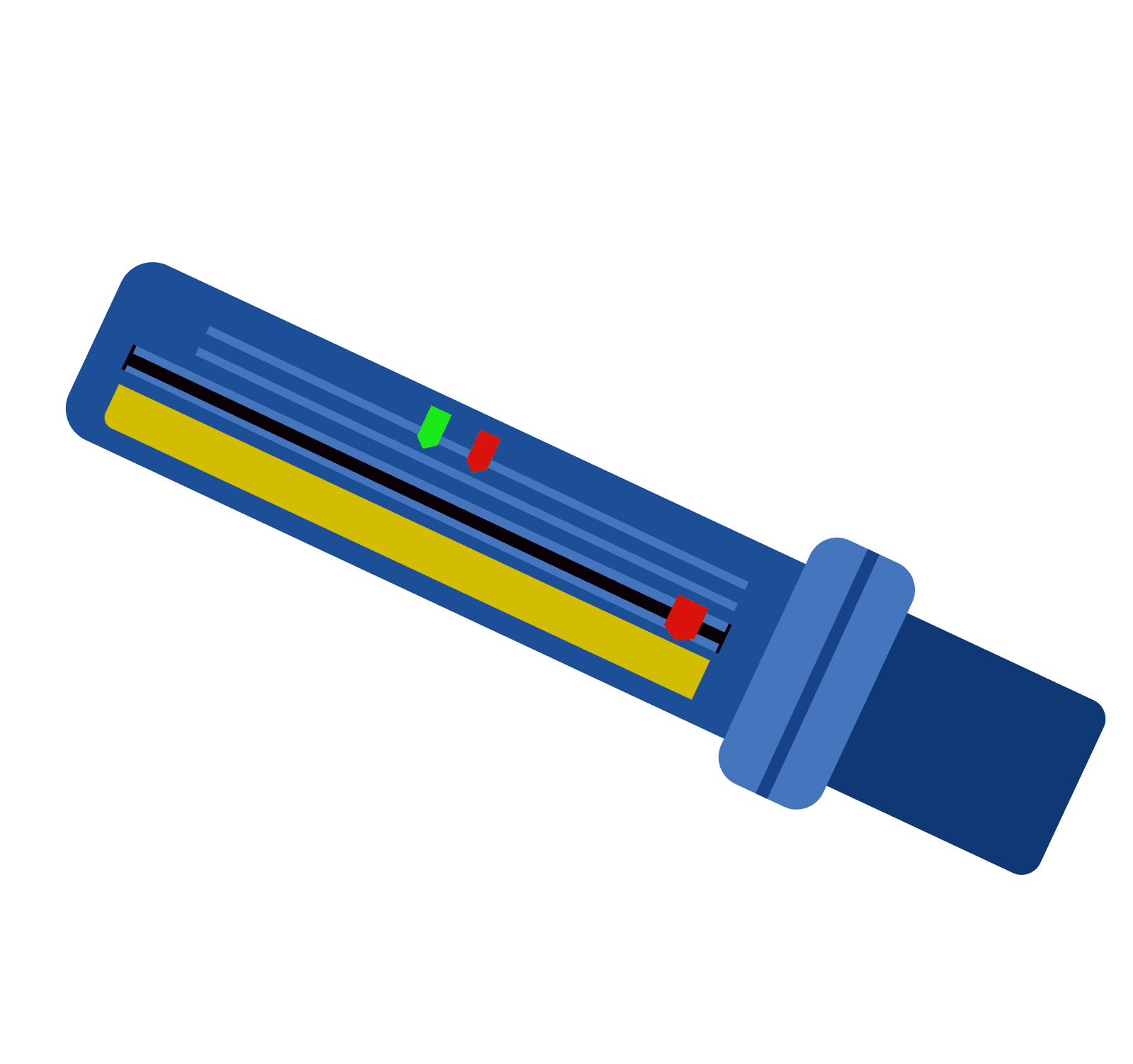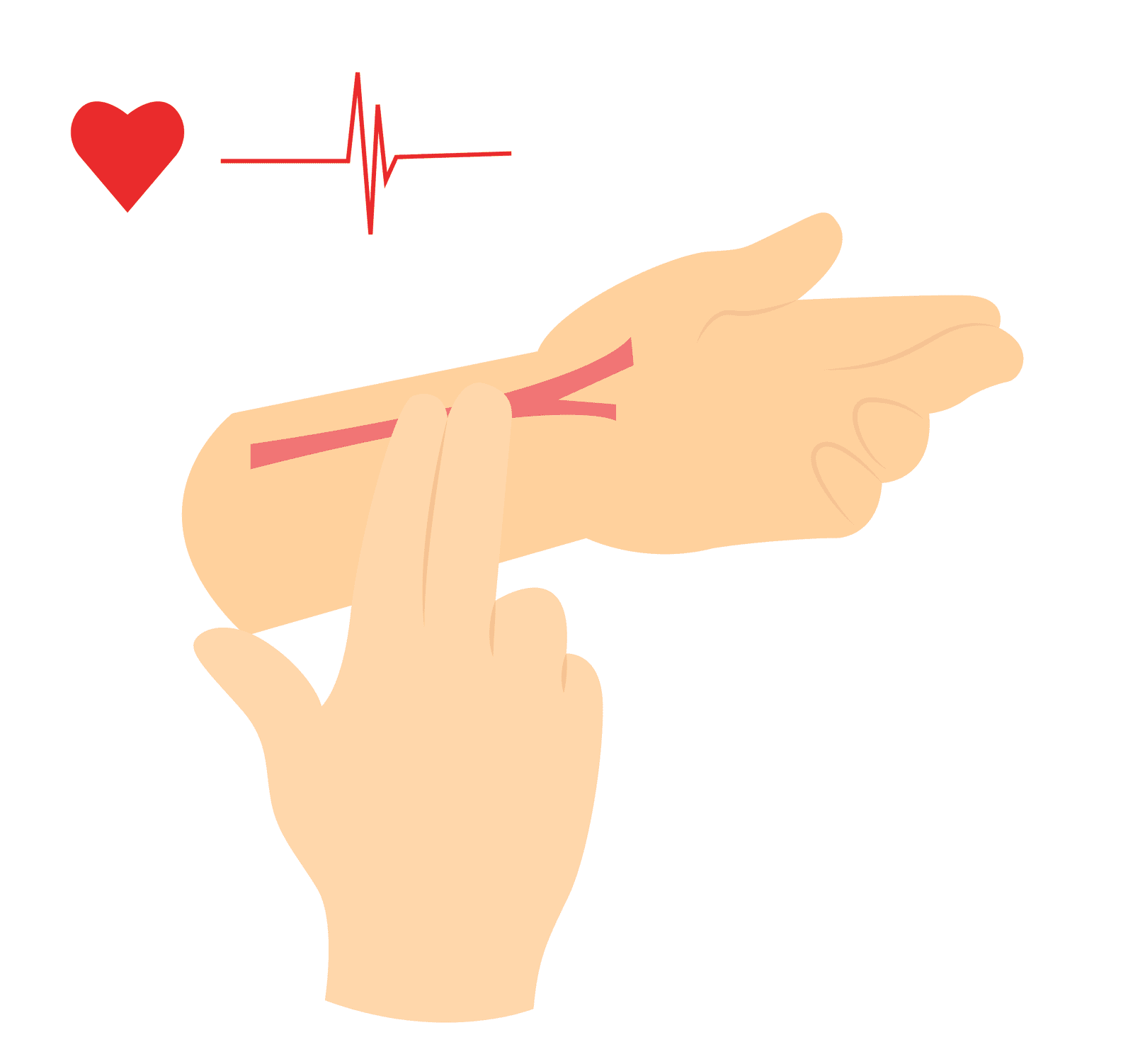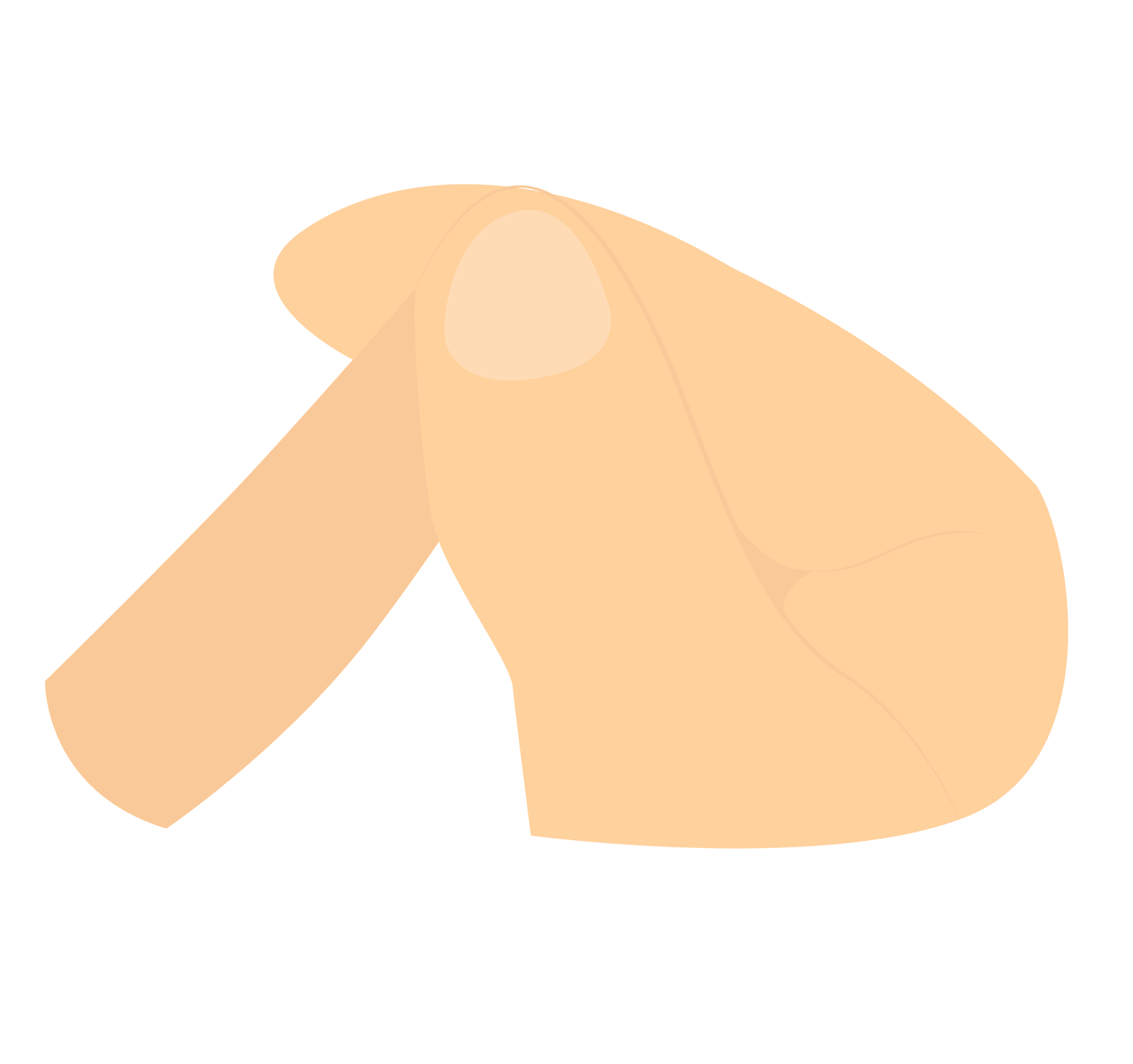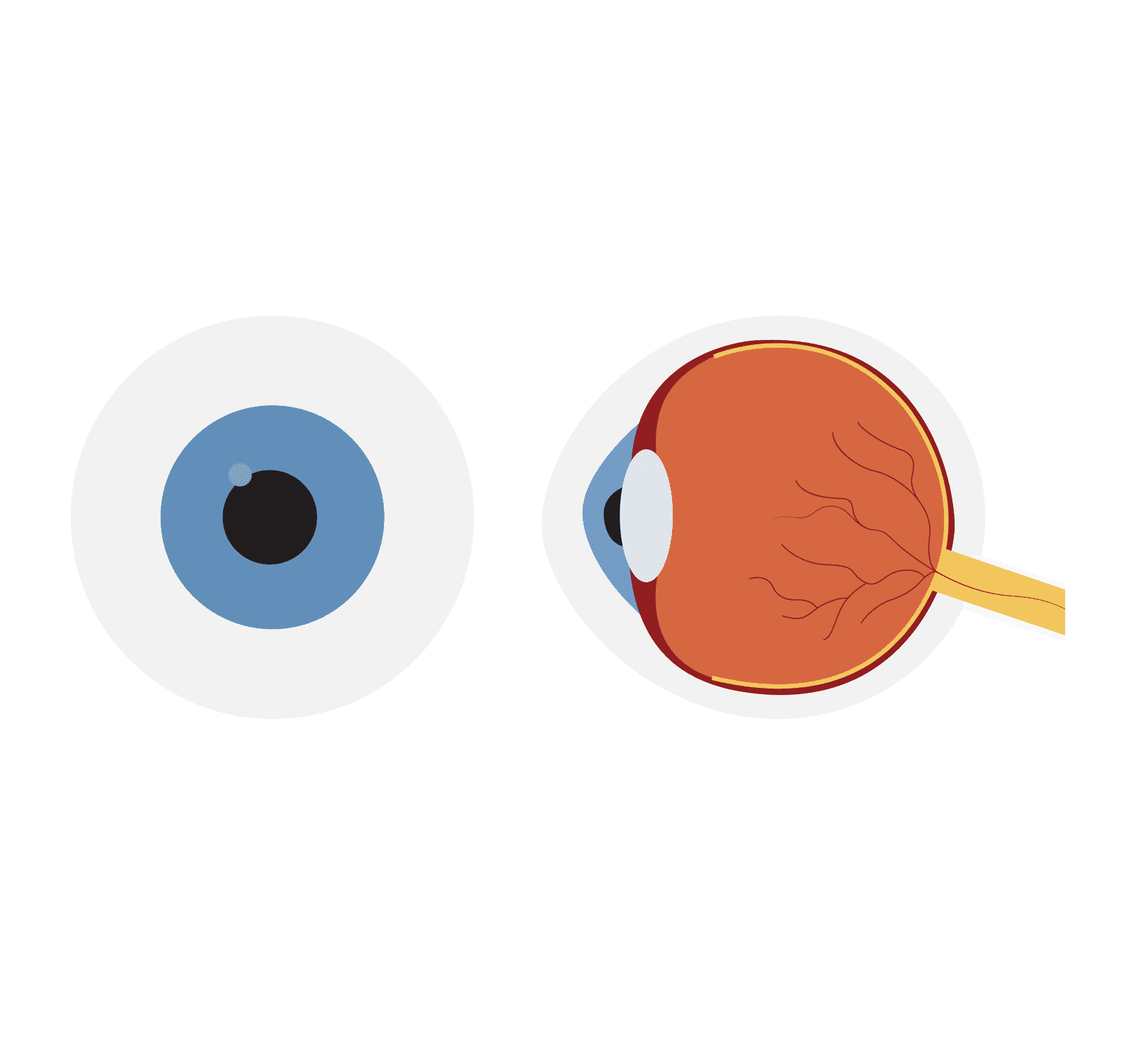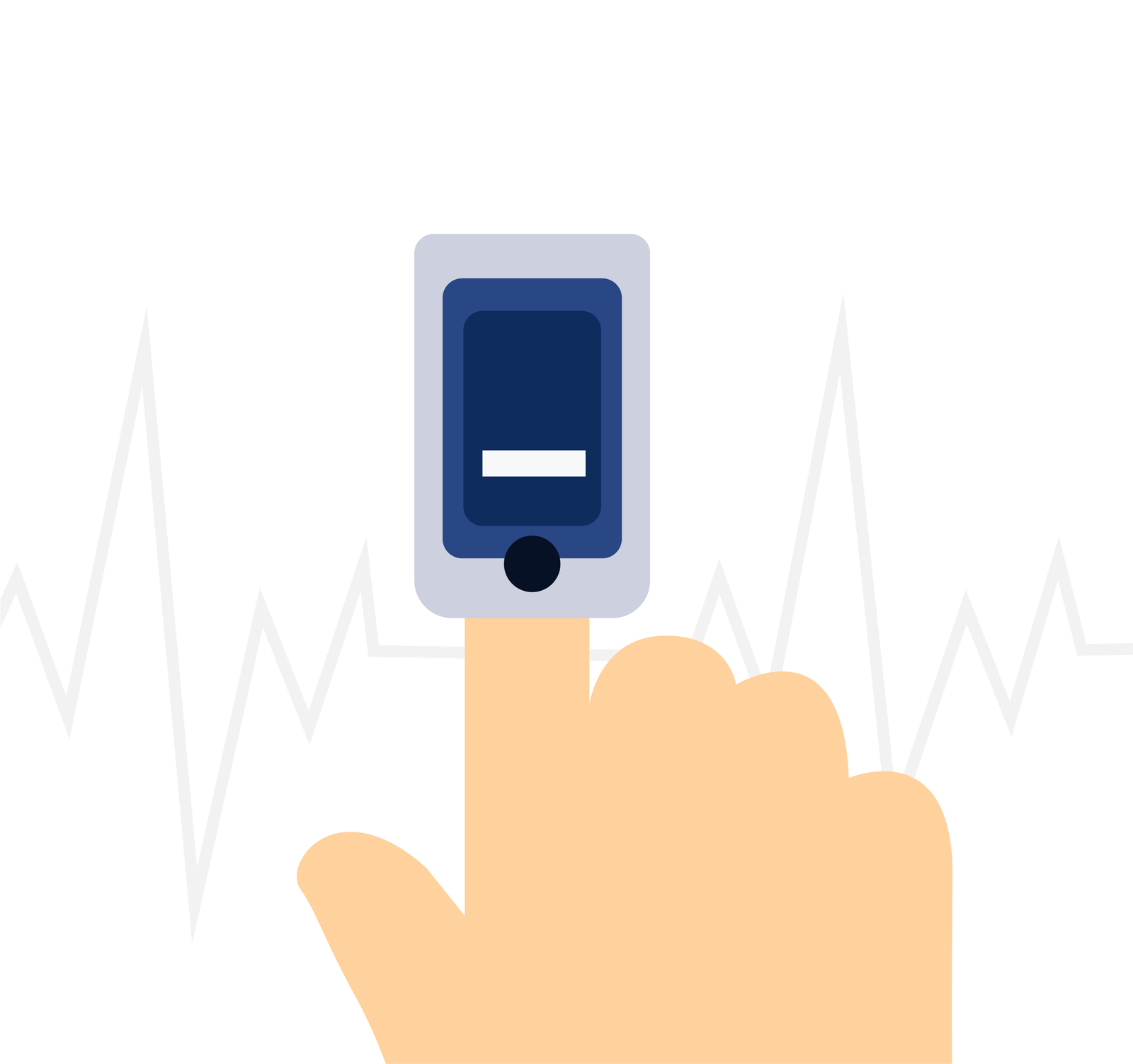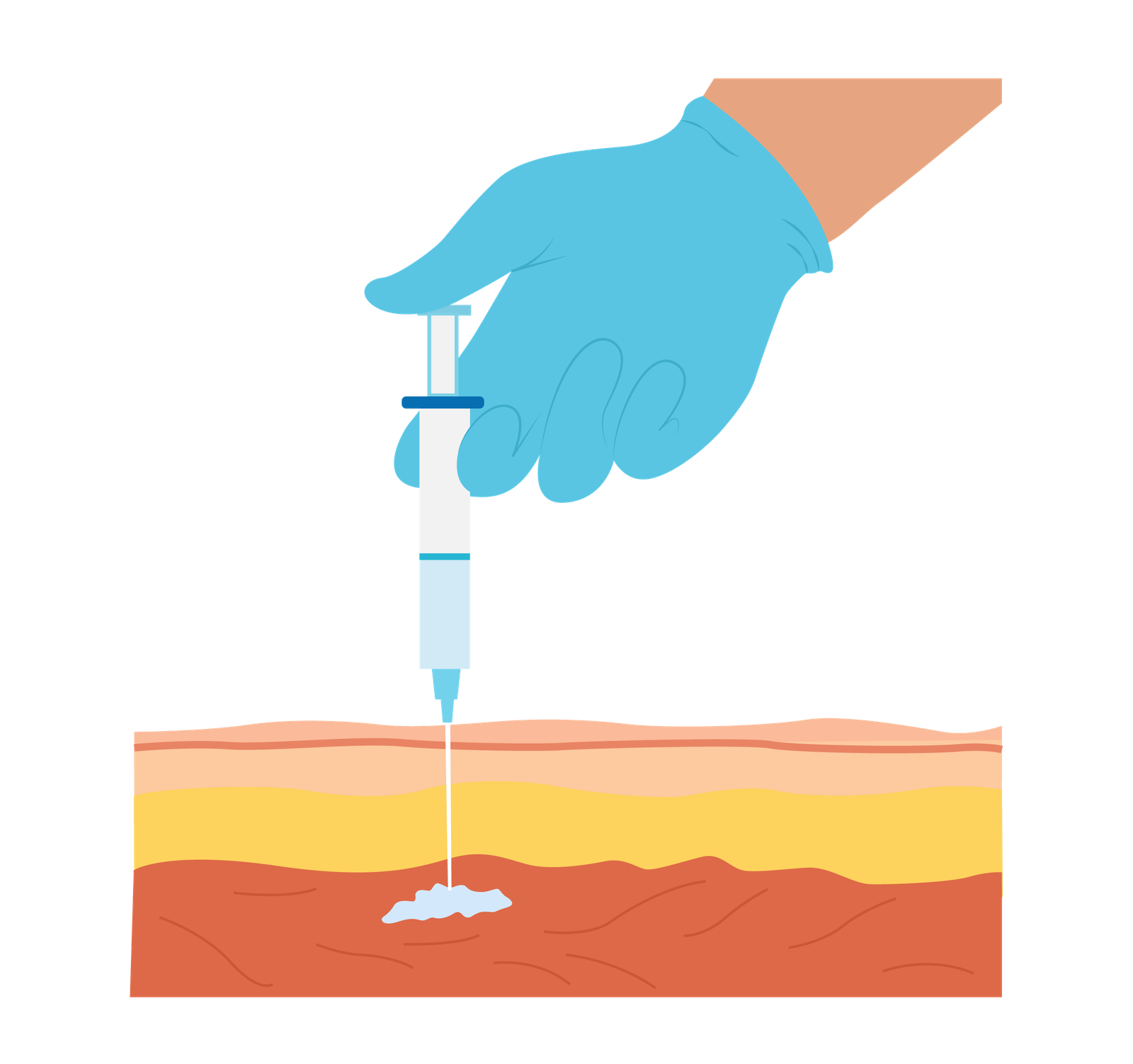Heart Blocks
Introduction
Heart blocks, also known as atrioventricular (AV) blocks, are a group of cardiac conduction disorders that affect the normal electrical signalling within the heart. When the electrical conduction between the atria and ventricles is blocked or slowed it can lead to heart blocks. Heart blocks can range from mild to severe and can a wide range of symptoms and potential complications which may require medical intervention.
There are 3 degrees of heart blocks:
First degree,
Second degree (which includes type 1 and 2)
Third degree
Causes Of Heart Blocks
Age-Related Degeneration
As people age, the electrical pathways in the heart may naturally deteriorate, leading to a higher risk of heart blocks. This is especially true for second-degree and third-degree heart blocks, which are more common in older individuals.
Fibrosis
Characterised by the excessive accumulation of fibrous or scar tissue in the myocardium that can affect electrical pathways. Fibrosis can be caused by various factors, including chronic inflammation, injuries to the heart muscle, chronic conditions (e.g., hypertension, diabetes, and heart failure), and exposure to toxins.
Infections
Infections of the heart, such as endocarditis or myocarditis, can damage the heart’s conduction system and cause heart blocks.
Medications
Certain medications, such as beta-blockers, calcium channel blockers, and antiarrhythmic drugs, can affect the heart’s electrical conduction system and contribute to heart blocks.
Electrolyte Imbalances
Abnormal levels of electrolytes in the blood, such as potassium, calcium, or magnesium, can affect the heart’s electrical conduction and potentially cause heart blocks.
Idiopathic Causes
In some cases, the exact cause of a heart block may not be identified, and it is classified as idiopathic.
Frist Degree Heart Block
Electrical Activity: A first-degree heart block is the delay in the electrical impulse from the atria to the ventricles. This delay is typically due to a problem in the atrioventricular (AV) node.

Degree Of Block: Despite the delay, every electrical impulse initiated in the atria eventually reaches the ventricles. This means that every heartbeat occurs, but the time it takes for the signal to travel from the atria to the ventricles is prolonged.
Causes:
- Drugs such as beta-blockers and digoxin
- Post myocardial infarction
- Myocarditis
- Thyroid dysfunction
- Electrolyte disturbances
- Lyme disease
Symptoms:
First-degree heart block is often asymptomatic, and many individuals may not even be aware that they have it. In some cases, individuals may experience mild symptoms such as fatigue, dizziness, or palpitations, especially during physical exertion.
ECG Findings:
First degree heart block has a prolonged PR interval of > 200ms.
Detailed Summary:
Heart Rate: Normal Range
Rhythm: Regular
P-Wave: Normal shape, amplitude, and duration each followed by a QRS complex.
PR Interval: Prolonged PR interval > 200 milliseconds (0.2 seconds)
QRS: Normal morphology and duration

Management:
In most cases, treatment is not required for a first-degree heart block, especially if it is asymptomatic and not associated with an underlying heart condition. If symptomatic, a pacemaker could be considered.
Complications:
First-degree heart block is considered mild, and it is usually not a cause for significant concern. However, patients with first-degree heart blocks may be at higher risk of atrial fibrillation (AF).
Second Degree Heart Block – Type 1
Second degree heart block type 1 is also known as Mobitz type 1 or Wenckebach Phenomenon
Electrical Activity: Second-degree type 1 heart block is defined by a characteristic pattern where there is a progressive prolongation electrical impulse to travel from the atria to the ventricles until a signal is blocked and fails to initiate a heartbeat. This delay is often due to dysfunction at or near the atrioventricular (AV) node.

Degree Of Block: Second-degree type 1 heart block does not block every atrial impulse from reaching the ventricles. It occurs intermittently, with the progressive prolongation of electrical impulse until a beat is dropped, with the pattern repeating.
Causes:
- Drugs such as beta-blockers and digoxin
- Inferior myocardial infarction
- Myocarditis
Symptoms:
Patients with second-degree type 1 heart block may or may not experience symptoms. Common symptoms can include dizziness, light-headedness, or syncope. Irregular pulse and/or bradycardia may also be noted.
ECG Findings:
Second-degree type 1 heart block is recognized by a progressively lengthening PR interval until a P wave is not followed by a QRS complex. After the dropped beat, the PR interval typically shortens, and the cycle begins again.
Detailed Summary:
Heart Rate: Normal Range
Rhythm: Irregular
P-Wave: Normal shape, amplitude, and duration but not all are followed by a QRS complex
PR Interval: Progressively lengthen of PR interval until a QRS complex is dropped
QRS: Normal morphology and duration

Management:
In most cases, treatment is not required for a second-degree heart block type 1, especially if it is asymptomatic and not associated with an underlying heart condition. If symptomatic, a pacemaker could be considered.
Complications:
Second-degree heart block type 1 is usually benign but can rarely cause haemodynamically instability in patients.
Second Degree Heart Block – Type 2
Second degree heart block type 2 is also known as Mobitz type 2.
Electrical Activity: Second-degree type 2 heart block is characterized by intermittent and irregular electrical conduction in the heart. It results in a “block and drop” pattern, where some of the electrical impulses originating in the atria do not reach the ventricles.

Degree Of Block: In second-degree type 2 heart block, there is a significant degree of blockage in the atrioventricular (AV) conduction system. Typically, not all atrial impulses are able to conduct through to the ventricles. This block typically occurs at the bundle branches or the bundle of His. This type of block can be described by ratios such as 2:1, 3:1 etc. where QRS complexes drop every 2nd or 3rd P wave.
Causes:
- Myocardial infarction
- Hyperkalaemia
- Drugs such as beta-blockers and digoxin
- Thyroid Dysfunction
Symptoms:
Individuals with second-degree type 2 heart block may experience symptoms such as dizziness, light-headedness, syncope, or chest pain.
ECG Findings:
On an ECG, second-degree type 2 heart block is recognised by dropped QRS complexes with normal PR interval.
Detailed Summary:
Heart Rate: Normal Range
Rhythm: Irregular (can also be regularly irregular such as 3:1)
P-Wave: Normal shape, amplitude, and duration but more P waves will be present than QRS complexes
PR Interval: Consistent normal PR interval
QRS: Can present normally or broad. Broad QRS complex will be present if the conduction failure is located distal to the bundle of His.

Management:
Cardiac monitoring should be undertaken as soon as possible with further investigation required. If scope of practice allows, temporary pacing or isoprenaline for haemodynamically compromised patients may be required.
A pacemaker would be fitted if no reversible cause is found.
Complications:
Second degree heart block type 2 can lead to complete heart block leading to life-threatening bradycardia. Untreated second degree heart blocks type 2 can result in severe symptoms like syncope and angina.
Third Degree Heart Block
Electrical Activity: Third degree hear blocks is a complete dissociation of electrical activity between atria and ventricles.

Degree Of Block: Third-degree heart block represents the highest degree of blockage in the atrioventricular (AV) conduction system. This condition is characterized by a complete and permanent dissociation of electrical activity between the atria and ventricles.
Causes:
- Infections (Endocarditis, Lyme Disease)
- Ischaemic Heart Disease
- Drugs such as beta-blockers and digoxin
- Thyroid Dysfunction
Symptoms:
Symptoms of third-degree heart block can include dizziness, syncope , fatigue, shortness of breath, chest pain, and a risk of sudden cardiac death.
Other findings may include irregular pulse, bradycardia and haemodynamic compromise.
ECG Findings:
Third-degree heart block is the complete absence of any coordinated relationship between the P waves and the QRS complexes. Each have their own rhythms with no regular relationship between them.
Detailed Summary:
Heart Rate: Bradycardic
Rhythm: Variable can be irregular or regularly irregular.
P-Wave: Normal shape, amplitude, and duration but no association with QRS complexes
PR Interval: Absent as no relationship between p waves and QRS complexes
QRS: Can present narrow (<120ms) or broad (>120ms).
Narrow QRS would suggest origination above the bifurcation of the bundle of His. Heart rate >40bpm
Wide QRS originates below the bifurcation of bundle of his. This broad complex would produce absolute bradycardia with more significant clinical features present.

Management:
Cardiac monitoring should be undertaken as soon as possible with further investigation required.
Atropine may be used in some rhythms if indicated.
If scope of practice allows, transcutaneous pacing or isoprenaline for haemodynamically compromised patients may be required.
A permanent pacemaker is usually required
Complications:
Sudden cardiac death can occur due to ventricular arrhythmias
ECG Examples – Heart Blocks
Conclusion
Heart blocks are a group of cardiac conduction disorders that can range from mild to severe, impacting the synchronised rhythm. Early diagnosis, appropriate medical intervention, and, when necessary, the use of pacemakers is crucial in managing heart blocks effectively.
Understanding the different types, causes, and ECG findings associated with heart blocks is essential as it allows for timely treatment, thereby improving the overall quality of life and outcomes for those affected by these conditions.
Key Points
- Heart block involves interruptions in the electrical signals regulating the heart’s rhythm, classified into degrees from mild (first-degree) to severe (third-degree or complete block).
- Symptoms vary based on the degree and can range from mild dizziness to severe fainting or chest pain.
- Treatment options include medications, pacemaker implantation, or surgery, depending on the severity and individual health conditions.
Bibliography
Joint Royal Colleges Ambulance Liaison Committee and Association of Ambulance Chief Executives (2022). JRCALC Clinical Guidelines 2022. Class Professional Publishing
Oldroyd, S. H., & Makaryus, A. N. (2020). First Degree Heart Block. PubMed; StatPearls Publishing. https://www.ncbi.nlm.nih.gov/books/NBK448164/
Introduction
Heart blocks, also known as atrioventricular (AV) blocks, are a group of cardiac conduction disorders that affect the normal electrical signalling within the heart. When the electrical conduction between the atria and ventricles is blocked or slowed it can lead to heart blocks. Heart blocks can range from mild to severe and can a wide range of symptoms and potential complications which may require medical intervention.
There are 3 degrees of heart blocks:
First degree,
Second degree (which includes type 1 and 2)
Third degree
Causes Of Heart Blocks
Fibrosis
Characterised by the excessive accumulation of fibrous or scar tissue in the myocardium that can affect electrical pathways. Fibrosis can be caused by various factors, including chronic inflammation, injuries to the heart muscle, chronic conditions (e.g., hypertension, diabetes, and heart failure), and exposure to toxins.
Age-Related Degeneration
As people age, the electrical pathways in the heart may naturally deteriorate, leading to a higher risk of heart blocks. This is especially true for second-degree and third-degree heart blocks, which are more common in older individuals.
Idiopathic Causes
In some cases, the exact cause of a heart block may not be identified, and it is classified as idiopathic.
Electrolyte Imbalances
Abnormal levels of electrolytes in the blood, such as potassium, calcium, or magnesium, can affect the heart’s electrical conduction and potentially cause heart blocks.
Medications
Certain medications, such as beta-blockers, calcium channel blockers, and antiarrhythmic drugs, can affect the heart’s electrical conduction system and contribute to heart blocks.
Infections
Infections of the heart, such as endocarditis or myocarditis, can damage the heart’s conduction system and cause heart blocks.
First Degree Heart Block
Electrical Activity: A first-degree heart block is the delay in the electrical impulse from the atria to the ventricles. This delay is typically due to a problem in the atrioventricular (AV) node.

Degree Of Block: Despite the delay, every electrical impulse initiated in the atria eventually reaches the ventricles. This means that every heartbeat occurs, but the time it takes for the signal to travel from the atria to the ventricles is prolonged.
Causes:
- Drugs such as beta-blockers and digoxin
- Post myocardial infarction
- Myocarditis
- Thyroid dysfunction
- Electrolyte disturbances
- Lyme disease
Symptoms:
First-degree heart block is often asymptomatic, and many individuals may not even be aware that they have it. In some cases, individuals may experience mild symptoms such as fatigue, dizziness, or palpitations, especially during physical exertion.
ECG Findings:
First degree heart block has a prolonged PR interval of > 200ms.
Detailed Summary:
Heart Rate: Normal Range
Rhythm: Regular
P-Wave: Normal shape, amplitude, and duration each followed by a QRS complex.
PR Interval: Prolonged PR interval > 200 milliseconds (0.2 seconds)
QRS: Normal morphology and duration

Management:
In most cases, treatment is not required for a first-degree heart block, especially if it is asymptomatic and not associated with an underlying heart condition. If symptomatic, a pacemaker could be considered.
Complications:
First-degree heart block is considered mild, and it is usually not a cause for significant concern. However, patients with first-degree heart blocks may be at higher risk of atrial fibrillation (AF).
Second Degree Heart Block – Type 1
Second degree heart block type 1 is also known as Mobitz type 1 or Wenckebach Phenomenon
Electrical Activity: Second-degree type 1 heart block is defined by a characteristic pattern where there is a progressive prolongation electrical impulse to travel from the atria to the ventricles until a signal is blocked and fails to initiate a heartbeat. This delay is often due to dysfunction at or near the atrioventricular (AV) node.

Degree Of Block: Second-degree type 1 heart block does not block every atrial impulse from reaching the ventricles. It occurs intermittently, with the progressive prolongation of electrical impulse until a beat is dropped, with the pattern repeating.
Causes:
- Drugs such as beta-blockers and digoxin
- Inferior myocardial infarction
- Myocarditis
Symptoms:
Patients with second-degree type 1 heart block may or may not experience symptoms. Common symptoms can include dizziness, light-headedness, or syncope. Irregular pulse and/or bradycardia may also be noted.
ECG Findings:
Second-degree type 1 heart block is recognized by a progressively lengthening PR interval until a P wave is not followed by a QRS complex. After the dropped beat, the PR interval typically shortens, and the cycle begins again.
Detailed Summary:
Heart Rate: Normal Range
Rhythm: Irregular
P-Wave: Normal shape, amplitude, and duration but not all are followed by a QRS complex
PR Interval: Progressively lengthen of PR interval until a QRS complex is dropped
QRS: Normal morphology and duration

Management:
In most cases, treatment is not required for a second-degree heart block type 1, especially if it is asymptomatic and not associated with an underlying heart condition. If symptomatic, a pacemaker could be considered.
Complications:
Second-degree heart block type 1 is usually benign but can rarely cause haemodynamically instability in patients.
Second Degree Heart Block – Type 2
Second degree heart block type 2 is also known as Mobitz type 2.
Electrical Activity: Second-degree type 2 heart block is characterized by intermittent and irregular electrical conduction in the heart. It results in a “block and drop” pattern, where some of the electrical impulses originating in the atria do not reach the ventricles.

Degree Of Block: In second-degree type 2 heart block, there is a significant degree of blockage in the atrioventricular (AV) conduction system. Typically, not all atrial impulses are able to conduct through to the ventricles. This block typically occurs at the bundle branches or the bundle of His. This type of block can be described by ratios such as 2:1, 3:1 etc. where QRS complexes drop every 2nd or 3rd P wave.
Causes:
- Myocardial infarction
- Hyperkalaemia
- Drugs such as beta-blockers and digoxin
- Thyroid Dysfunction
Symptoms:
Individuals with second-degree type 2 heart block may experience symptoms such as dizziness, light-headedness, syncope, or chest pain.
ECG Findings:
On an ECG, second-degree type 2 heart block is recognised by dropped QRS complexes with normal PR interval.
Detailed Summary:
Heart Rate: Normal Range
Rhythm: Irregular (can also be regularly irregular such as 3:1)
P-Wave: Normal shape, amplitude, and duration but more P waves will be present than QRS complexes
PR Interval: Consistent normal PR interval
QRS: Can present normally or broad. Broad QRS complex will be present if the conduction failure is located distal to the bundle of His.

Management:
Cardiac monitoring should be undertaken as soon as possible with further investigation required. If scope of practice allows, temporary pacing or isoprenaline for haemodynamically compromised patients may be required.
A pacemaker would be fitted if no reversible cause is found.
Complications:
Second degree heart block type 2 can lead to complete heart block leading to life-threatening bradycardia. Untreated second degree heart blocks type 2 can result in severe symptoms like syncope and angina.
Third Degree Heart Block
Electrical Activity: Third degree hear blocks is a complete dissociation of electrical activity between atria and ventricles.

Degree Of Block: Third-degree heart block represents the highest degree of blockage in the atrioventricular (AV) conduction system. This condition is characterized by a complete and permanent dissociation of electrical activity between the atria and ventricles.
Causes:
- Infections (Endocarditis, Lyme Disease)
- Ischaemic Heart Disease
- Drugs such as beta-blockers and digoxin
- Thyroid Dysfunction
Symptoms:
Symptoms of third-degree heart block can include dizziness, syncope , fatigue, shortness of breath, chest pain, and a risk of sudden cardiac death.
Other findings may include irregular pulse, bradycardia and haemodynamic compromise.
ECG Findings:
Third-degree heart block is the complete absence of any coordinated relationship between the P waves and the QRS complexes. Each have their own rhythms with no regular relationship between them.
Detailed Summary:
Heart Rate: Bradycardic
Rhythm: Variable can be irregular or regularly irregular.
P-Wave: Normal shape, amplitude, and duration but no association with QRS complexes
PR Interval: Absent as no relationship between p waves and QRS complexes
QRS: Can present narrow (<120ms) or broad (>120ms).
Narrow QRS would suggest origination above the bifurcation of the bundle of His. Heart rate >40bpm
Wide QRS originates below the bifurcation of bundle of his. This broad complex would produce absolute bradycardia with more significant clinical features present.

Management:
Cardiac monitoring should be undertaken as soon as possible with further investigation required.
Atropine may be used in some rhythms if indicated.
If scope of practice allows, transcutaneous pacing or isoprenaline for haemodynamically compromised patients may be required.
A permanent pacemaker is usually required
Complications:
Sudden cardiac death can occur due to ventricular arrhythmias
ECG Examples – Heart Blocks
Conclusion
Heart blocks are a group of cardiac conduction disorders that can range from mild to severe, impacting the synchronised rhythm. Early diagnosis, appropriate medical intervention, and, when necessary, the use of pacemakers is crucial in managing heart blocks effectively.
Understanding the different types, causes, and ECG findings associated with heart blocks is essential as it allows for timely treatment, thereby improving the overall quality of life and outcomes for those affected by these conditions.
Key Points
- Heart block involves interruptions in the electrical signals regulating the heart’s rhythm, classified into degrees from mild (first-degree) to severe (third-degree or complete block).
- Symptoms vary based on the degree and can range from mild dizziness to severe fainting or chest pain.
- Treatment options include medications, pacemaker implantation, or surgery, depending on the severity and individual health conditions.
Bibliography
Joint Royal Colleges Ambulance Liaison Committee and Association of Ambulance Chief Executives (2022). JRCALC Clinical Guidelines 2022. Class Professional Publishing
Oldroyd, S. H., & Makaryus, A. N. (2020). First Degree Heart Block. PubMed; StatPearls Publishing. https://www.ncbi.nlm.nih.gov/books/NBK448164/

